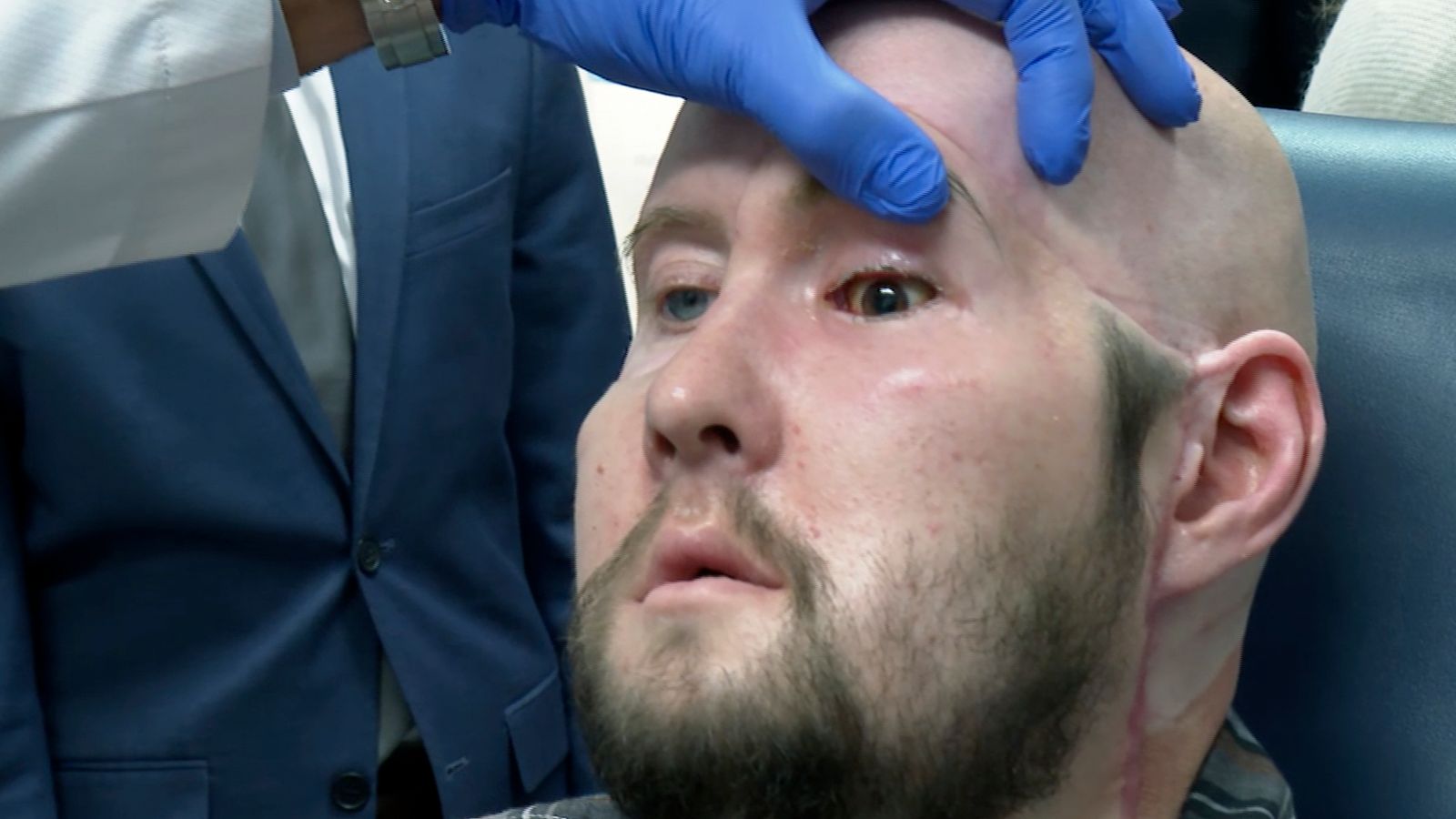Surgeons have performed the world’s first ever whole-eye transplant, a feat hailed as a breakthrough despite the patient not yet regaining his sight.
Doctors “never expected it to work at all”, patient Aaron James said, but the eye has shown signs of health, such as functioning blood vessels and a promising retina.
It has been six months since the 21-hour surgery, performed during a partial face transplant in New York, but the surgeon who led the procedure said Mr James, 46, may yet see out of his left eye again.
Warning: This article contains a graphic picture of the patient
“I don’t think anyone can claim that he will see. But by the same token, they can’t claim that he will not see,” Dr Eduardo Rodriguez said.
“The mere fact that we transplanted an eye is a huge step forward, something that for centuries has been thought about, but it’s never been performed.”
Mr James, a military veteran from Arkansas, survived a work-related high-voltage electrical accident that destroyed the left side of his face, his nose, his mouth and his left eye in June 2021.
He said he knew he might not regain his vision, but he had hoped that surgeons could “learn something to help the next person”.
“Hopefully this opens up a new path,” he said.
“It feels good. I still don’t have any movement in it yet. My eyelid, I can’t blink yet. But I’m getting sensation now,” he added.
Until now, doctors have only been able to transplant the cornea, the clear front layer of the eye.
Read more:
Breast implants used in lifesaving surgery after lungs removed from man’s body
Drug that could prevent breast cancer to be offered to nearly 300,000 women
Initially, doctors were just planning to include the eyeball as part of the face transplant for cosmetic reasons, Dr Rodriguez said.
“If some form of vision restoration occurred, it would be wonderful, but… the goal was for us to perform the technical operation,” Dr Rodriquez said, adding they aimed to have the eyeball survive.
“At this point, I think we’re pretty happy with the result that we were able to achieve with a very technically demanding operation.”
Mr James’s eye will continue to be monitored, but right now it is not communicating with the brain through the optic nerve.
To encourage connection between the donor and recipient optic nerves, surgeons harvested adult stem cells and injected them into the optic nerve during the transplant, hoping they would replace damaged cells.
Transplantation of a viable eye opens many new possibilities, Dr Rodriguez said, even if sight is not restored in this case.
Be the first to get Breaking News
Install the Sky News app for free
Other research teams are developing ways to connect nerve networks in the brain to sightless eyes through insertion of electrodes, for example, to allow vision, he said.
“If we can work with other scientists that are working on other methods of restoring vision or restoring images to the visual cortex, I think we’re one step closer,” he added.







